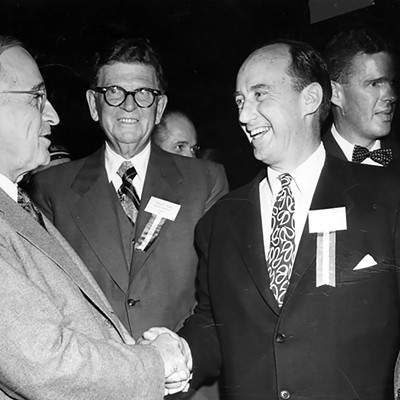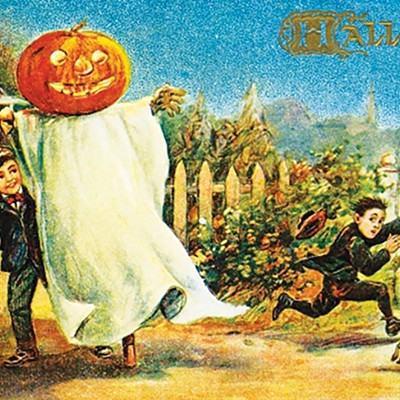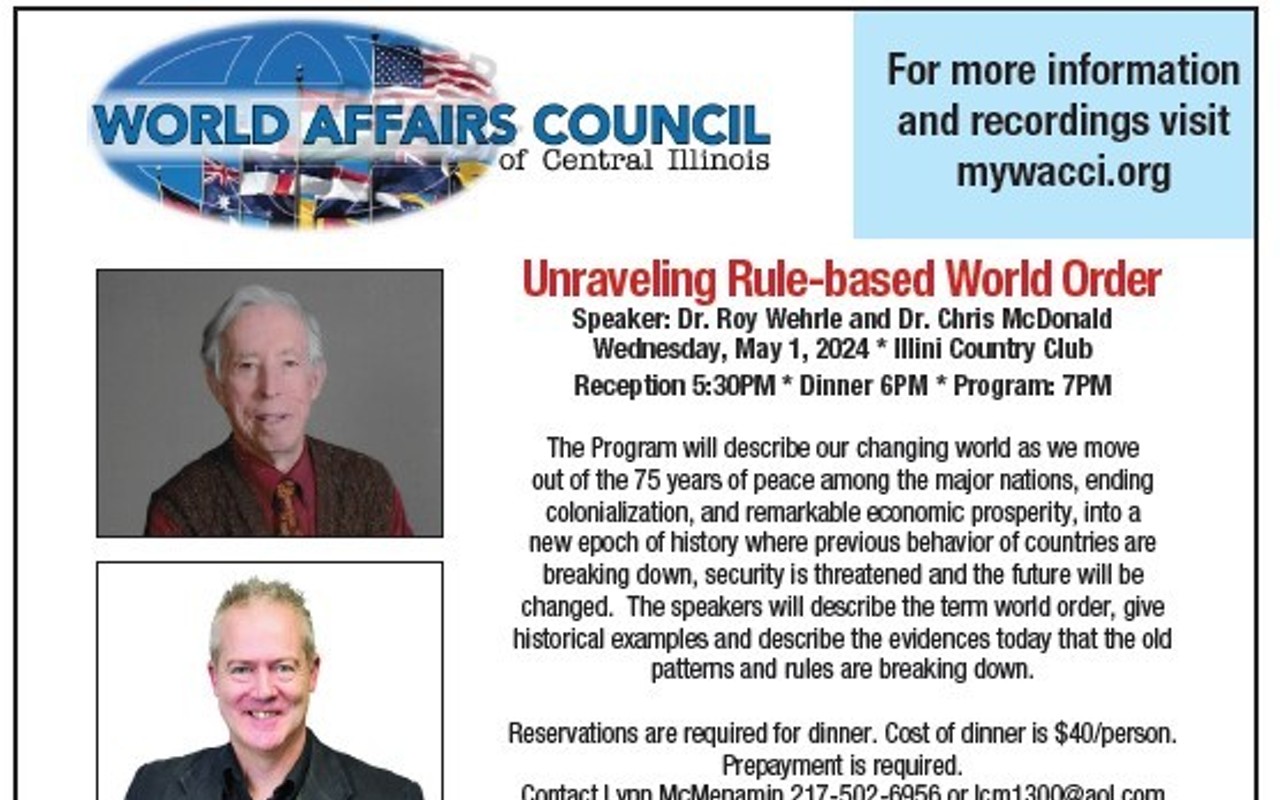You think this weather’s bad? Illinois in the Depression was worse.
[
{
"name": "Air - MedRect Combo - Inline Content 1",
"component": "11490391",
"insertPoint": "3",
"requiredCountToDisplay": "1",
"parentWrapperClass": "fdn-ads-inline-content-block"
},{
"name": "Air - MedRect Combo - Inline Content 2",
"component": "11490392",
"insertPoint": "7",
"requiredCountToDisplay": "5",
"parentWrapperClass": "fdn-ads-inline-content-block"
},{
"name": "Air - MedRect Combo - Inline Content 3",
"component": "11490393",
"insertPoint": "12",
"requiredCountToDisplay": "9",
"parentWrapperClass": "fdn-ads-inline-content-block"
}
]
The Great Depression was a dark time in Illinois history, with mind-numbing unemployment, homelessness and wage losses. State residents also had to contend with horrific weather.
Though climate extremes are a hot-button issue today, the weather of the 1930s was some of the most severe in American history, particularly in the Land of Lincoln. Unfortunately for Illinoisans suffering with Depression-era hardship, weather was a consistent problem.
Among the issues were a string of brutally hot summers, as the heat rarely seemed to let up during the Depression. In much of Illinois, the decade produced daily record-high temperatures on over half the days during June, July and August.
One of the worst was the summer of 1934, when the mercury regularly reached 100 degrees. In May, the state was choked with remnants of the Dust Bowl, which dropped blinding dust on Chicago.
In central Illinois, a Carlinville newspaper reported that “dust was everywhere, and hanging heavily in the air enough to make breathing difficult.”
It was even harder in 1936, which remains the hottest summer in American history. Springfield reached 100 degrees on 29 days that summer, and four of the city’s all-time 10 warmest temperatures occurred in July 1936. Highs in the capital city never dipped below 100 from Aug. 12-28. Thirty people died in Springfield from the heat that summer.
Elsewhere, Peoria residents suffered through 23 days of 100 or better. Countless Illinois cities set all-time highs on July 14, 1936, including Moline, where the temperature hit 111 degrees.
Other cities that set record highs on July 14, 1936, include Mt. Vernon (114), Danville (112), Dixon (110) and Charleston (110). The next day, the mercury reached a whopping 113 in Rushville, Carlinville and Galesburg.
In Peoria, the temperatures for July 13-15, 1936 were 109, 110 and a record 113, respectively. Thirteen states, including Indiana, Wisconsin and Michigan, recorded their warmest-ever temperatures during the summer of 1936.
Other summers in the 1930s posed challenges as well. Daily record highs were set in many areas of Illinois during the summers of 1930, 1931, 1933 and 1939.
Winter brought little respite, as Illinois was hammered with a succession of years with bitter cold and heavy snow. February 1936 is still the nation’s coldest February on record, and the third-coldest in Chicago history. The previous month, lows plunged to minus 15 or worse in many Illinois communities during a prolonged cold snap.
The winter of 1936 was hardly an aberration, as a number of Illinois locales set all-time record lows during a frigid blast during the final week of February 1934. The terrible winters contrasted with the blazing hot summers of the period.
Nowhere was that more evident than in North Dakota. The all-time low in that state’s history was on Feb. 15, 1936, a mind-numbing minus-60 at Parshall – which is only 110 miles from Steele, where the state’s record high of 121 degrees was set on July 6 that same year
Dry conditions prevailed in many of the warmer months in the early 1930s, but that gave way to soaking rains that created the infamous Ohio River flood of 1937. Much of southern Illinois was inundated by the phenomenon, a winter flood that occurred in late January and early February.
The town of Harrisburg was swamped as floodwaters rolled 30 miles inland. In the historic outpost of Shawneetown, residents were forced to live in a tent city due to rising water. The community was ravaged to such an extent that a new version of Shawneetown was eventually built three miles inland. In today’s dollars, damage in southern Illinois was estimated at $1.2 billion.
Towns up and down the Ohio River were affected by the flood. In Cincinnati, baseball players for the hometown Reds used a boat in early January to tour the team’s home park, Crosley Field, which at one point sat under 21 feet of water.
The weather extremes only added to the misery of the Depression, leaving the unemployment rate at 40 percent in Chicago, where the list of tax delinquencies spanned 260 newspaper pages. Farm economies, already struggling from a downturn in the 1920s, were hammered even more.
An estimated 1.5 million Illinoisans – nearly 20 percent of the population – were out of work, and factory payrolls in some cities were slashed a staggering 93 percent.
Tom Emery is a freelance writer and historical researcher from Carlinville. He may be reached at 217-710-8392 or [email protected].
Though climate extremes are a hot-button issue today, the weather of the 1930s was some of the most severe in American history, particularly in the Land of Lincoln. Unfortunately for Illinoisans suffering with Depression-era hardship, weather was a consistent problem.
Among the issues were a string of brutally hot summers, as the heat rarely seemed to let up during the Depression. In much of Illinois, the decade produced daily record-high temperatures on over half the days during June, July and August.
One of the worst was the summer of 1934, when the mercury regularly reached 100 degrees. In May, the state was choked with remnants of the Dust Bowl, which dropped blinding dust on Chicago.
In central Illinois, a Carlinville newspaper reported that “dust was everywhere, and hanging heavily in the air enough to make breathing difficult.”
It was even harder in 1936, which remains the hottest summer in American history. Springfield reached 100 degrees on 29 days that summer, and four of the city’s all-time 10 warmest temperatures occurred in July 1936. Highs in the capital city never dipped below 100 from Aug. 12-28. Thirty people died in Springfield from the heat that summer.
Elsewhere, Peoria residents suffered through 23 days of 100 or better. Countless Illinois cities set all-time highs on July 14, 1936, including Moline, where the temperature hit 111 degrees.
Other cities that set record highs on July 14, 1936, include Mt. Vernon (114), Danville (112), Dixon (110) and Charleston (110). The next day, the mercury reached a whopping 113 in Rushville, Carlinville and Galesburg.
In Peoria, the temperatures for July 13-15, 1936 were 109, 110 and a record 113, respectively. Thirteen states, including Indiana, Wisconsin and Michigan, recorded their warmest-ever temperatures during the summer of 1936.
Other summers in the 1930s posed challenges as well. Daily record highs were set in many areas of Illinois during the summers of 1930, 1931, 1933 and 1939.
Winter brought little respite, as Illinois was hammered with a succession of years with bitter cold and heavy snow. February 1936 is still the nation’s coldest February on record, and the third-coldest in Chicago history. The previous month, lows plunged to minus 15 or worse in many Illinois communities during a prolonged cold snap.
The winter of 1936 was hardly an aberration, as a number of Illinois locales set all-time record lows during a frigid blast during the final week of February 1934. The terrible winters contrasted with the blazing hot summers of the period.
Nowhere was that more evident than in North Dakota. The all-time low in that state’s history was on Feb. 15, 1936, a mind-numbing minus-60 at Parshall – which is only 110 miles from Steele, where the state’s record high of 121 degrees was set on July 6 that same year
Dry conditions prevailed in many of the warmer months in the early 1930s, but that gave way to soaking rains that created the infamous Ohio River flood of 1937. Much of southern Illinois was inundated by the phenomenon, a winter flood that occurred in late January and early February.
The town of Harrisburg was swamped as floodwaters rolled 30 miles inland. In the historic outpost of Shawneetown, residents were forced to live in a tent city due to rising water. The community was ravaged to such an extent that a new version of Shawneetown was eventually built three miles inland. In today’s dollars, damage in southern Illinois was estimated at $1.2 billion.
Towns up and down the Ohio River were affected by the flood. In Cincinnati, baseball players for the hometown Reds used a boat in early January to tour the team’s home park, Crosley Field, which at one point sat under 21 feet of water.
The weather extremes only added to the misery of the Depression, leaving the unemployment rate at 40 percent in Chicago, where the list of tax delinquencies spanned 260 newspaper pages. Farm economies, already struggling from a downturn in the 1920s, were hammered even more.
An estimated 1.5 million Illinoisans – nearly 20 percent of the population – were out of work, and factory payrolls in some cities were slashed a staggering 93 percent.
Tom Emery is a freelance writer and historical researcher from Carlinville. He may be reached at 217-710-8392 or [email protected].
Illinois Times has provided readers with independent journalism for almost 50 years, from news and politics to arts and culture.
Your support will help cover the costs of editorial content published each week. Without local news organizations, we would be less informed about the issues that affect our community..
Got something to say?
Send a letter to the editor and we'll publish your feedback in print!





















